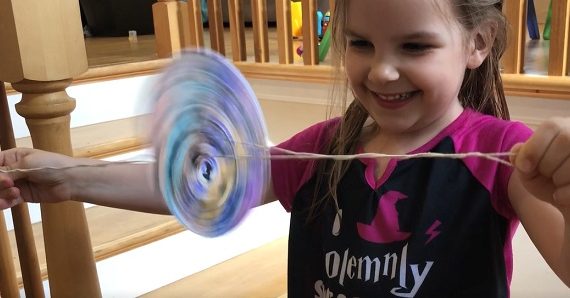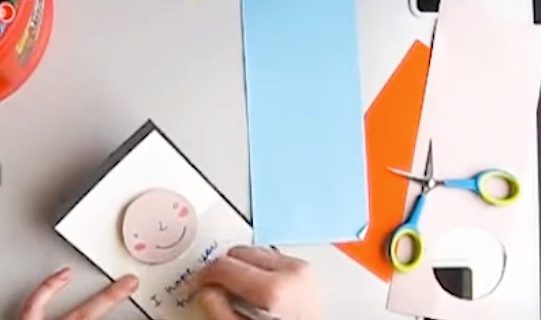
Expert advice on raising bilingual (or multi-lingual!) kids in Pittsburgh
Photo above courtesy of Persis Naumann/Kelir Books.
What language do we speak at home? How do we avoid losing our mother tongue? Is bilingualism even realistic? As more Pittsburgh families raise children with roots in more than one culture, these questions around bilingualism are becoming more central than ever.
“Language is culture,” says Dr. Leah Fabiano, who specializes in bilingual development. “For children to learn the language of their family or of their community is important for them to be connected to their family, to their heritage, to their community.”
Fabiano is an ASHA-certified bilingual speech-language pathologist, ASHA Fellow, and NIH-funded researcher. Her work focuses on reducing the misdiagnosis of speech and language impairments in bilingual children and supporting families in preserving their heritage languages.
Being bilingual or multi-lingual “isn’t just to get ahead or have extra skills to get good jobs,” she says. “It is really to be connected to who you are.”

The Bilingual Balancing Act
Raising a child in more than one language is rarely straightforward. For some, it means passing on a heritage language like Tamil, Arabic or Spanish. For others, it may mean introducing a second language in the hopes of building empathy, cultural awareness and curiosity.
Even if a child doesn’t grow up fully fluent in a second (or third) language, early exposure is important. “Most of the world is multilingual,” says Dr. Fabiano. “Here in the U.S., we often see bilingualism as a bonus or career tool. But for many families, it’s about staying connected to heritage.”
That connection, she emphasizes, needs to be reinforced early and often.
“The way that works the best for a child to really retain that heritage language or that home language is to have both parents using that home language all the time — with each other, with people who come into the home, with the child — to really give that child as much exposure as possible.”

Debunking the Myths
Still, many parents feel unsure about how much is too much. Some have even been advised by teachers or pediatricians to avoid multiple languages.
“That is the biggest myth in the whole world,” says Fabiano. “Parents should never ever stop talking to their children in the language of their choosing. Speaking the language of your choosing or languages of your choosing is your human right. It’s your child’s human right. And it does not cause nor exacerbate speech and language impairments. It does not cause a child to become confused.”
Fabiano is quick to remind parents not to blame themselves if children struggle to retain their home language. “It is never too late for a parent to look into enrichment opportunities for their child. The responsibility does fall entirely on the parents, unfortunately, as the schools here do not pick up the heritage languages and reinforce them in school.”
A Mother Tongue Movement
Persis Naumann, co-founder of Kelir Books and vice president of the Fulbright India Interest Group (FIIG) knows this struggle intimately. Born and raised in Chennai in a Tamil-speaking family, she moved to Pittsburgh in 2015. Today, she is raising a mixed-race daughter with Tamil as one of her home languages.
This inspired Naumann to launch Kelir Books and the We Are Tamil Too community, a multilingual children’s publishing company rooted in Tamil language and culture.
“Moving to the U.S. in 2015, living in Pittsburgh (home away from home) for almost 10 years, I have to constantly fight, compete and be super-intentional about my language to make it the tiniest part of our week,” she says.
Naumann notes that it typically takes only three generations for a heritage language to stop being passed on. “Many mixed-race, first-, second-, and third-generation migrants and diaspora kids lose their mother tongue or heritage language, and I empathize with them.”
For her, the loss of language is not just personal, it’s systemic. “These decisions are strongly dictated by socio-political-economic-educational contexts, access to adequate language resources, and isolation from full-immersion environments.”
Kelir Books is her way of pushing back. Designed for Tamil-speaking and Tamil-learning families, their bilingual books come with transliteration, audiobooks and culturally grounded stories.
“Children’s books are a great resource for adults trying to reconnect with their heritage language or learn the language,” she says.
Naumann’s goal is to create a community of belonging: “Not having people that experience similar things as you can be extremely isolating,” she says. “So to be seen and understood, I wanted to build that village… and bring equity in language and cultural resources.”

Practical Tips, Real Struggles
Fabiano says even small daily habits can build strong language foundations: “Book reading is actually one of the best things that parents can do with their children to expose them to vocabulary in another language. Twenty minutes of book reading a day has a significant impact on vocabulary growth in children.”
But it’s not just about books. “Parents should take their child to the zoo or a farm, and speak their home language in those new settings,” Naumann suggests. “You are, like, going to the farm one day or going to a community event where you are using language and vocabulary items that you wouldn’t come across at home.”
Naumann agrees, noting that for her family, bilingualism works best when it’s fun and social. “We have always endeavored to make language learning enjoyable by introducing and practicing it in a variety of contexts, including television, movies, music, games and everyday conversation,” she says.
Still, Naumann acknowledges the challenge of maintaining that balance: “It is often much easier and quicker to use English at home when we could have taken some extra time and used her heritage language instead.”
Building a Language-Rich Pittsburgh
Here in Pittsburgh, families have a surprising number of options to support bilingual learning. From Spanish immersion preschools to library-led Arabic storytimes, the city offers creative, community-rooted pathways for raising culturally curious kids.
And through initiatives like Kelir Books, families are finding new ways to feel seen.
“No one should be shamed for trying to learn the language or connect to their roots,” says Naumann. “Shame has no place in embracing our heritage language and culture — not for my daughter, not for my student volunteers, not for anyone in their heritage language and cultural journey.”
Whether you’re fluent, rusty or just beginning, the experts agree: The most important step is to start.
“There’s no right or wrong way to do it,” Fabiano says. “Whatever the family feels works for them is fine. And there are multiple ways that parents can expose their child to another language. Just start.”
Here are some local resources for bilingual families in Pittsburgh:
- Carnegie Library of Pittsburgh (Beechview, Squirrel Hill) has bilingual storytimes in Spanish and Chinese.
- Mango Languages is a web-based language learning program that is offered by subscription, but you can access the program for free with your Carnegie Library card.
- Little Pim is a language resource for younger learners made by the creators of Mango Languages, which is also available for free with your library card.
- Cooper-Siegel Community Library (Sharpsburg) has Spanish-English and Chinese-English storytimes.
- Mt. Lebanon Public Library has French and Spanish preschool story sessions.
- Andrew Carnegie Free Library has Arabic-English storytime.
- La Escuelita Arcoiris offers Spanish-immersion preschool and playgroups.
- Duo’s Treehouse, created by DuoLingo, offers free Spanish-English bilingual sessions for kids under 5.
- Pittsburgh Spanish Place has Spanish classes and camps.
- Cultured Kids Club has language programs in Spanish, French and Mandarin.
- Pittsburgh Chinese School has weekend Chinese language and culture classes.
- Tzu Chi Academy offers Mandarin language and values cultural education.
- Pittsburgh Japanese School is an accredited weekend school for fluent/heritage Japanese speakers.











